How to plant a border for year round color in the garden: follow our step-by-step guide
A garden designer shares her secrets on how to plant a border for year round color in the garden


A question I get asked so often in my work is how to plant a border for year round color. I believe this interest can largely be put down to changing climates and lifestyles, many of us are expecting more from our gardens than ever before. From wintery fireside gatherings to spring alfresco lunches, they need to work harder to look good all year round - and with that comes a new set of gardening jobs to think about, as well as new plants to acquaint yourself with.
And even the most experienced gardeners amongst us can struggle with keeping color and interest going for all 365 days a year. Particularly without adding significantly to your to-do list. The advice here is about achieving year round color without having to break the bank or spend hours in the garden every day.
With this change comes a small problem though, many of us are used to gardens being a summer thing. We are familiar with hydrangeas and tulips, geraniums and cherry blossoms. But we need to consider the rest of the year too. How do you design a garden that looks alive, and full with color all year round?
From evergreen shrubs to seasonal bulbs, we’ve outlined the many ways you can have colorful garden borders from January to December. And what’s more, many of these plants can be enjoyed from inside as well as out – so if cool weather gatherings aren't your thing, you can at least enjoy the vivid hues of these plants from the warmth of your home.
Learn how to plant a border for year round color with our expert tips
From planting bulbs to choosing the right bushes, these are the handy garden design ideas and planting tricks to consider when planning how to plant a border for year round color.
1. Assess the specific conditions of your garden
When planning on doing anything in your garden, I always start with the essentials. Whether you’re a seasoned pro or are just starting with a brand new space, there are constantly changing conditions in the great outdoors that need to be recorded and acknowledged and observed over time, in order for us to get the most from our gardens.
The key ones to start with are light, weather conditions, soil types, shade and temperature. Some gardens, especially in urban areas, become sun traps in the summer. A garden a few miles away in a rural area might be windswept and have a totally different set of growing conditions – and therefore the plants that will work in the garden borders will differ too.
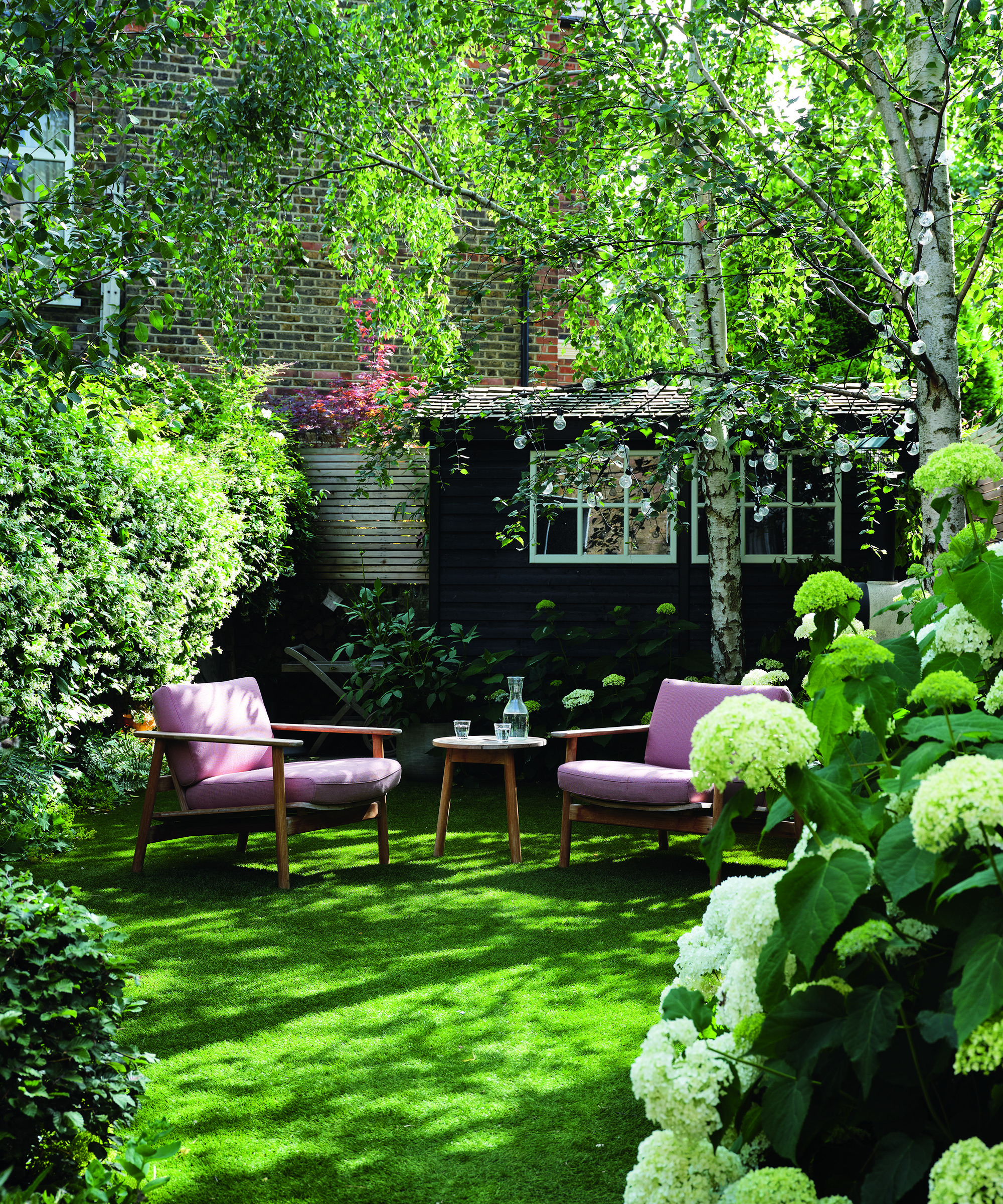
2. Think about the time you have available for maintaining a border
It's important to be honest with yourself about about how much work you can do in your garden. If you want your garden to thrive and have a succession of color all through the year, even low maintenance garden ideas will probably require you to put aside a couple of hours a week in the spring/summer to take care of it. If you have less time, choose fewer, bigger plants that have long seasons of interest.
When you’ve made a note of all your requirements, it’s time to start planning your garden. Take a piece of paper and jot down any existing plants you have that you want to keep, where the sun goes throughout the day, where any wet patches or dry patches are – and get ready to start scheming.
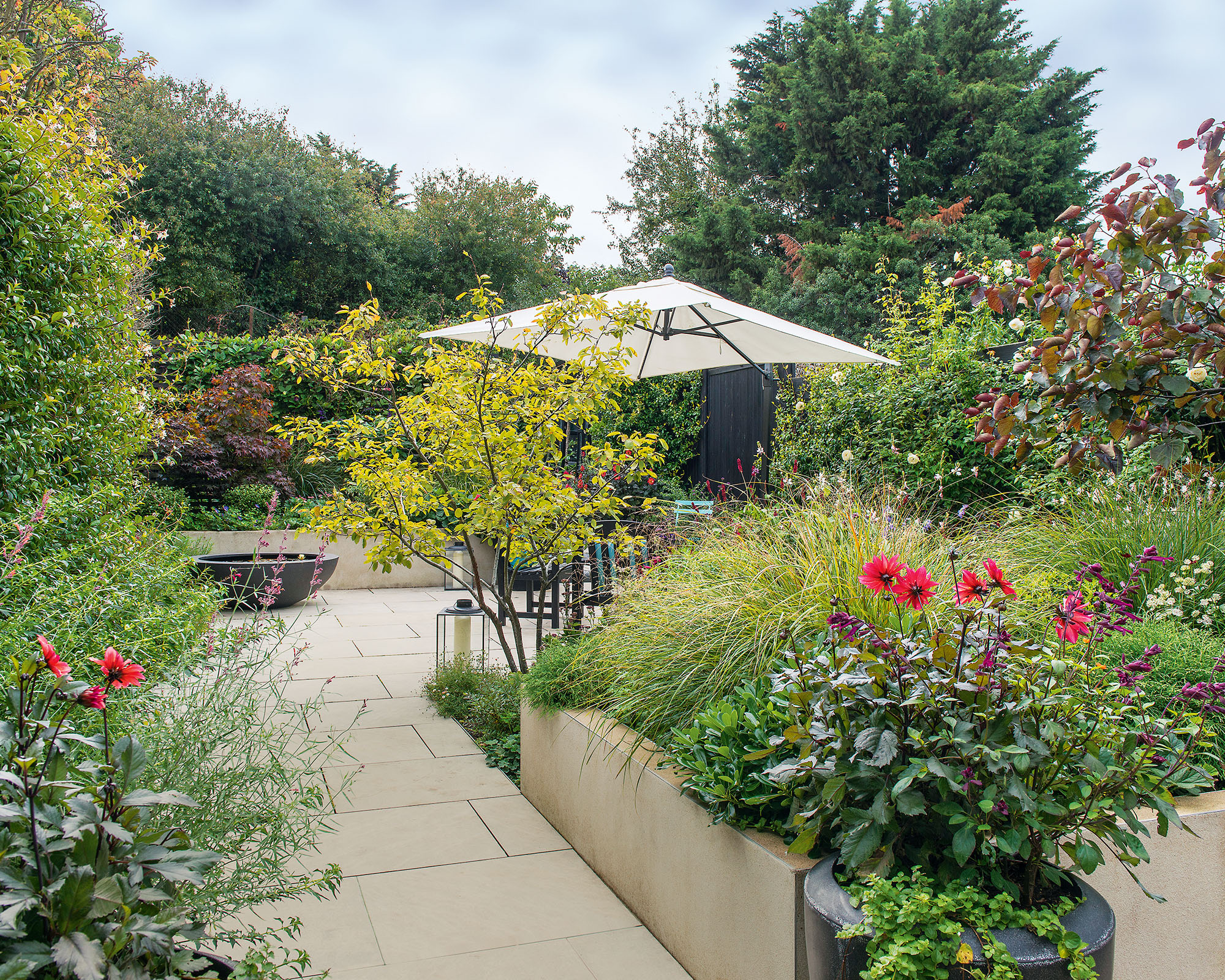
3. Plan your year of color
In most northern hemisphere countries we have four seasons. However, in recent years it’s become increasingly obvious that drastic weather changes are here to stay. So in many places the traditional seasons are now somewhat blurred. Unpredictable weather can wipe out entire plants or cause a bad year for their flowering habits, so it’s best to diversify. And diversity of planting is also good for soil health, so it’s a win win - a garden with healthy soil will reap rewards of luscious color, deep tones and long and prolific flowering periods.
It may be useful to draw up a calendar of what to plant when when planning your year of color. Then you can start to plot into that calendar what plants you like and research when they will flower. If you are a big fan of spring, then maybe you want to go big on cherries and other spring flowering trees, as well as bulbs such as narcissus, tulips and allium bulbs.
You’ll notice when you start doing this where some plants cross over, in either their foliage growing or their blooms appearing. The key is to start thinking about the succession of the plants in your garden – they will be appearing and flourishing and dying back over different periods so make sure there are lots of overlapping plants grouped together.

4. Decide on a look for your planting scheme
It might help at this point to start thinking about what style of planting you like. You don’t have to stick to one genre, for instance ‘cottage garden’, ‘Mediterranean garden’ or ‘prairie planting.’ But if you have an idea of what direction you’re going in creatively, then it will help you narrow down what plants to use for creating a border with year round color.
But of course, the real key to selecting the right plants ultimately lies in choosing the right plants for the right place. Now that you’ve worked out where the shade, sun and wet and dry areas of your garden are, you can narrow down what plants will work where. If your garden is hot and dry, look to southern Europe or the west coast of the US for inspiration, where you’ll find gravel gardens, succulents and drought-tolerant plants galore. If you’re in a shady north-facing garden, you will need to seek out the best woodland plants that enjoy a setting of dappled shade, like foxgloves and hakonechloa macra.
When selecting plants for a garden, designers often work from the biggest to the smallest. For instance, first of all by deciding which plants are going to form the structural elements of the garden. These are usually shrubs or trees that are either evergreen or have year round interest through winter berries or attractive winter bark.
Next, it’s the smaller seasonal plants that will create interest at different stages in the year, then finally the plants that are supporting acts, like clumps of geraniums or evergreen types of ornamental grasses that will be the reliable foundations of your scheme.

5. Pick a range of different plant colors
There are so many colors that you can squeeze into an outdoor space. Often when I show clients a planting moodboard they’re initially taken aback and think I’ve picked out too many different shades or clashing colors, but what you have to remember is that most plants only flower for a few weeks at a time.
This means you can have a changing garden color scheme, starting, for instance, with deep oranges and electric blues in early summer and softening to dusky reds and fading pinks as the season progresses. Or maybe you’d rather just go for something strong and simple, like dark purples and burnt oranges (in which case geums, heleniums and salvias will serve you well if conditions are right).
Or perhaps you want to focus on the often forgotten color in a garden – the plethora of shades of green flowers available, from zingy to velvet to lime. Or you could be a real stickler for classic and elegant and select only white flowers for a pared back look.
When choosing a color scheme it’s also important to consider texture, shape, height, form and movement. These are the less obvious features of our plants that can all contribute to year round interest. From soft silky grasses to spiky eryngium and mounds of pittosporum, when carefully thought through these elements all add up to make a beautiful garden.
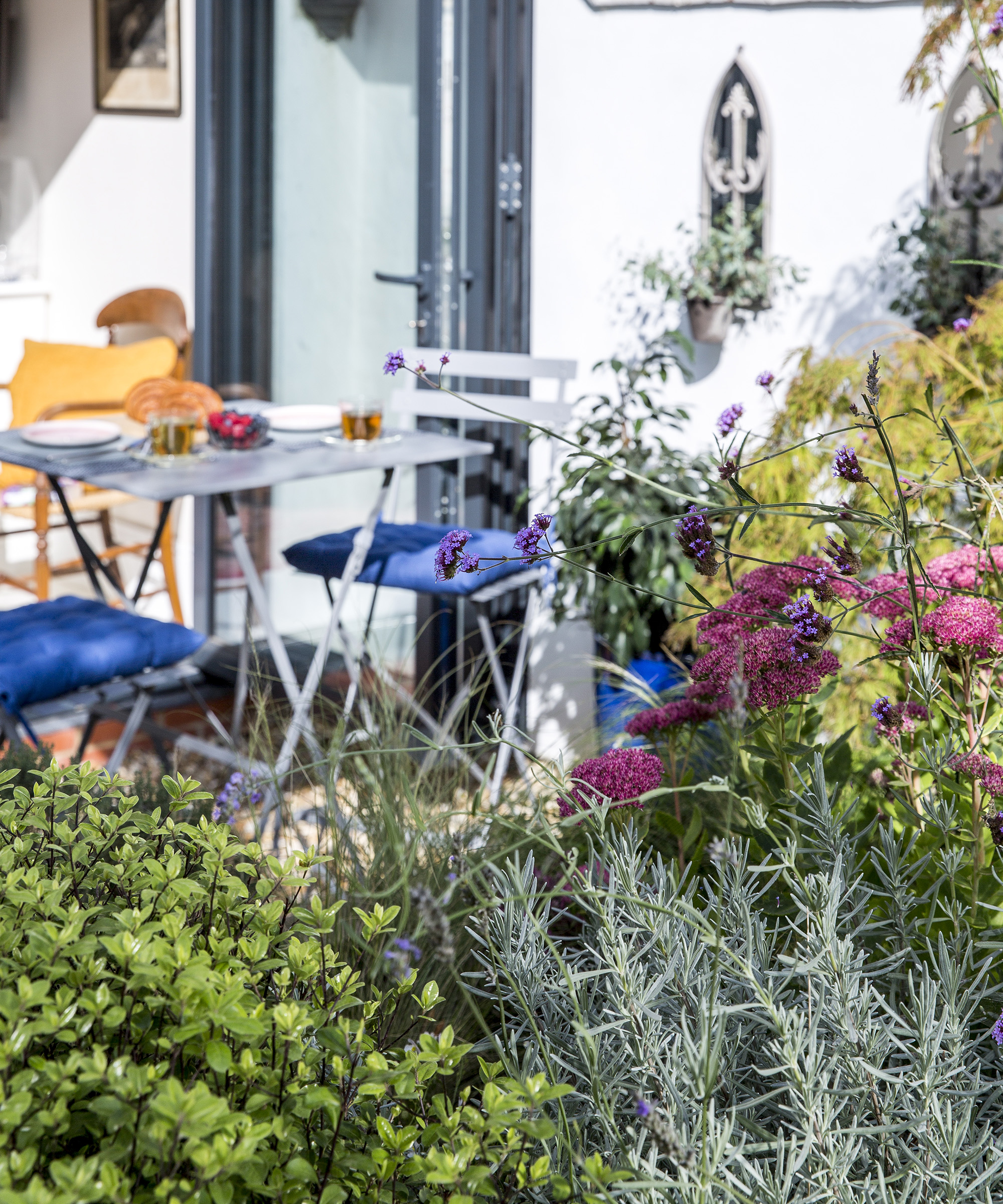
6. Build up your base of evergreens
Think about which bit of your garden you see the most when considering how to plant a border for year round color. For instance, in the winter you may not go out there much, in which case focus on planting color in the borders or garden planters near your house for you to enjoy and let the rest of your garden do its thing until it’s warm enough for you to enjoy it again. Similarly, maybe you have a garden path that you use everyday – this should work hard to look good, without causing you stress every time you look at it because you worry about something you haven’t done!
Evergreen shrubs are particularly valuable here, as are evergreen spreading ground cover plants. I often use pittosporum in gardens as it’s a good alternative to Buxus (which can get Box blight in many places worldwide, especially in the UK).
Additionally, hebes, daphnes, choisyas and viburnum are all brilliant shrubs as they flower at different times in the year and can grow to a good size in a relatively short period of time. Do check that you’re buying an evergreen variety of these though, for instance not all types of viburnum are evergreen.
And don’t forget about including some of the best climbing plants too. There are so many to choose from that will offer year round vertical interest. Trachelospermum jasminoides and clematis urophylla ‘Winter Beauty’ are both easy to grow and very reliable.
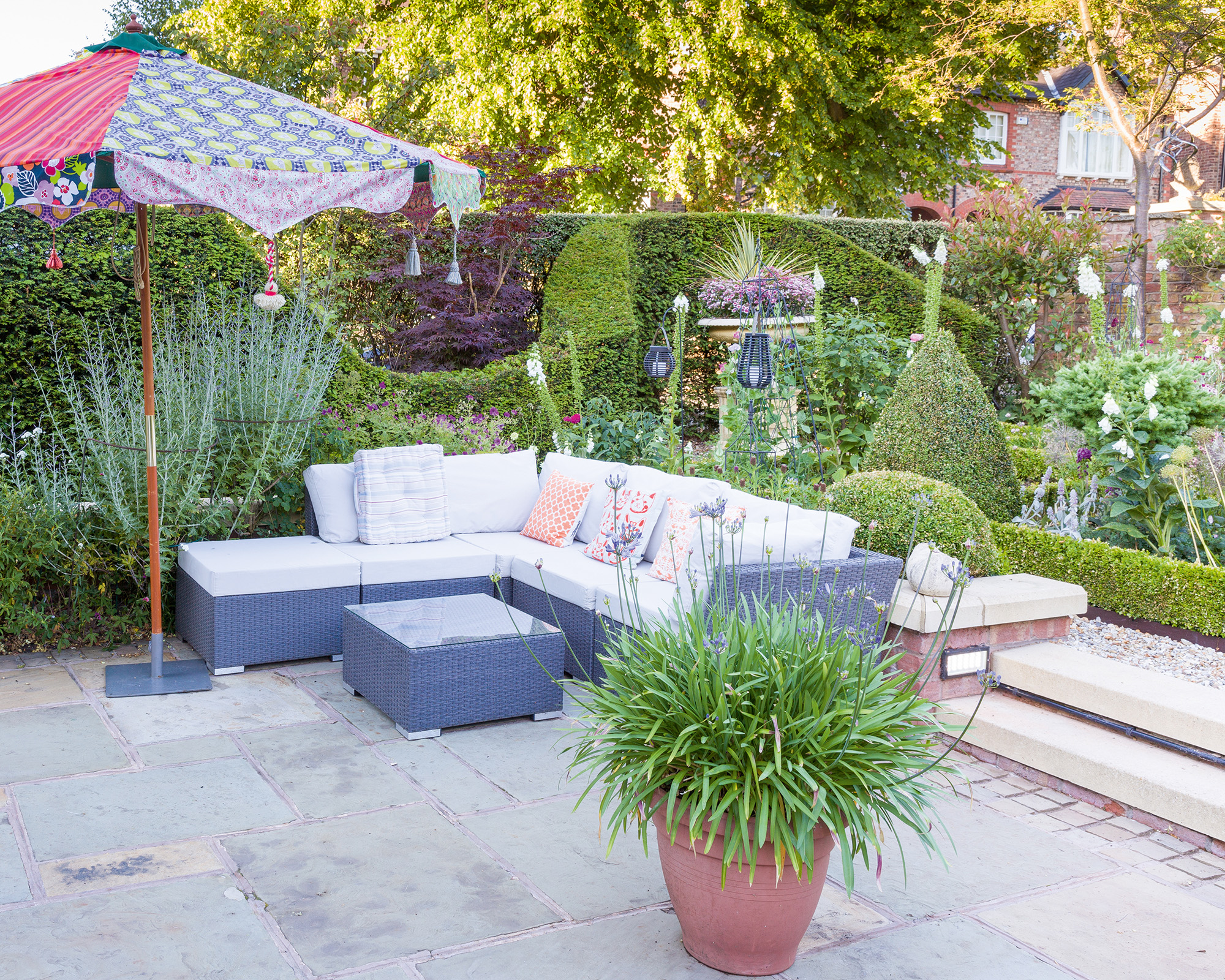
7. Choose long-flowering plants for easy maintenance
I am yet to encounter a client who wants a high maintenance garden. Even those with large gardens and lots of help from a trusted gardener or three don’t want plants that are on rotation or big areas of bedding plants or annuals that need routinely replacing. But equally, no garden is zero maintenance. There is, however, a sweet spot somewhere in the middle.
Any scheme, of any size, should have reliable plants in it. Geraniums spring to mind here, as do salvias, sanguisorba, erigeron and heucheras. All these plants are fairly tough and unfussed about their exact conditions, and will flower for months at a time. It’s worth mentioning that the way to prolong these flowering periods is by deadheading flowers regularly – as with most things in the garden, the more you put in the more you get out – but they will also be fine a bit ignored, if you don’t have time.
Another way to get the most of your garden in terms of color, and allow yourself time to keep on top of things, is to choose two dates a year when you’ll do a big day of general maintenance. Doing little bits here and there when time allows is a real luxury and one you can afford if you designate some time to getting stuck in. Early spring and fall are a good time to do these bigger tasks.
This means that when it comes to summer you won’t be overwhelmed and instead can enjoy wandering around deadheading with a glass of your favorite drink in hand in the evening, rather than feeling like your garden border care is yet another chore on a long list!
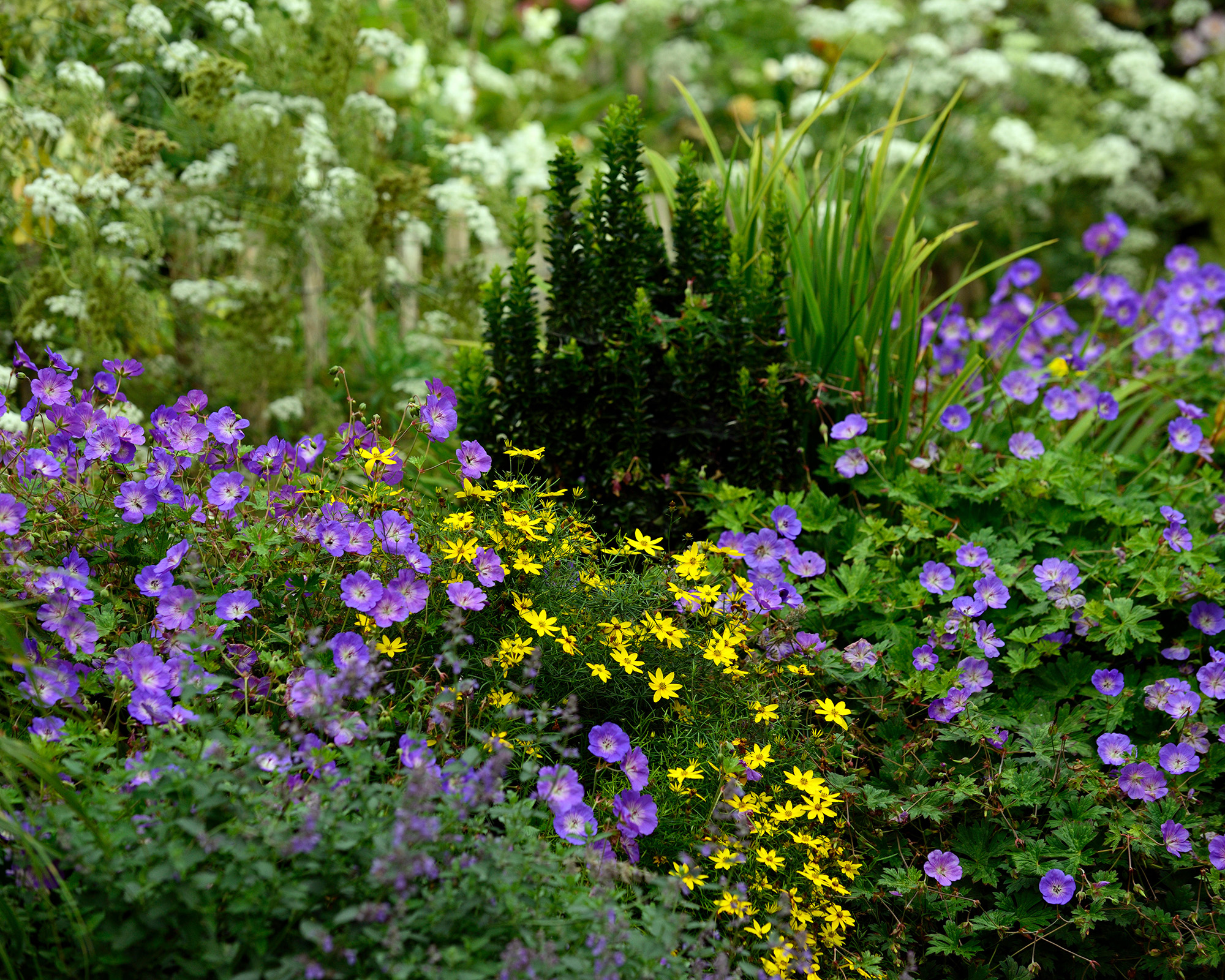
8. Add shrubs to your scheme
We’ve mentioned this briefly when talking about evergreens but shrubs are a fantastic way to introduce year round color into your garden borders. There is a shrub for every spot, and there are endless varieties that flower all through the year. Better yet, many have the most delicious scents.
From the winter flowering viburnum and daphnes to the delicious scents of Philadelphus and shrub roses in the height of summer, these larger plants take up space without making a higher maintenance garden.
Most only need pruning and mulching once a year, just make sure you look up which variety you have as some shrubs enjoy being cut back on old wood, some on new wood, most directly after they’ve finished flowering.
One of the most popular shrubs is of course the hydrangea, with its large flower heads that start to form in spring and give way to months of color as summer gets going. It’s also a great idea to leave hydrangea flowerheads on over winter, protecting new growth from frost whilst also maintaining its shape and role in your garden scheme. The dried out flowerheads may seem ‘dead’, but they’re still serving a purpose. More on that later.
A real winner for winter gardens is of course the wonderful Cornus, or dogwood by its common name, many varieties of which have deep red or orange or even flame colored stems that shine in a winter garden.
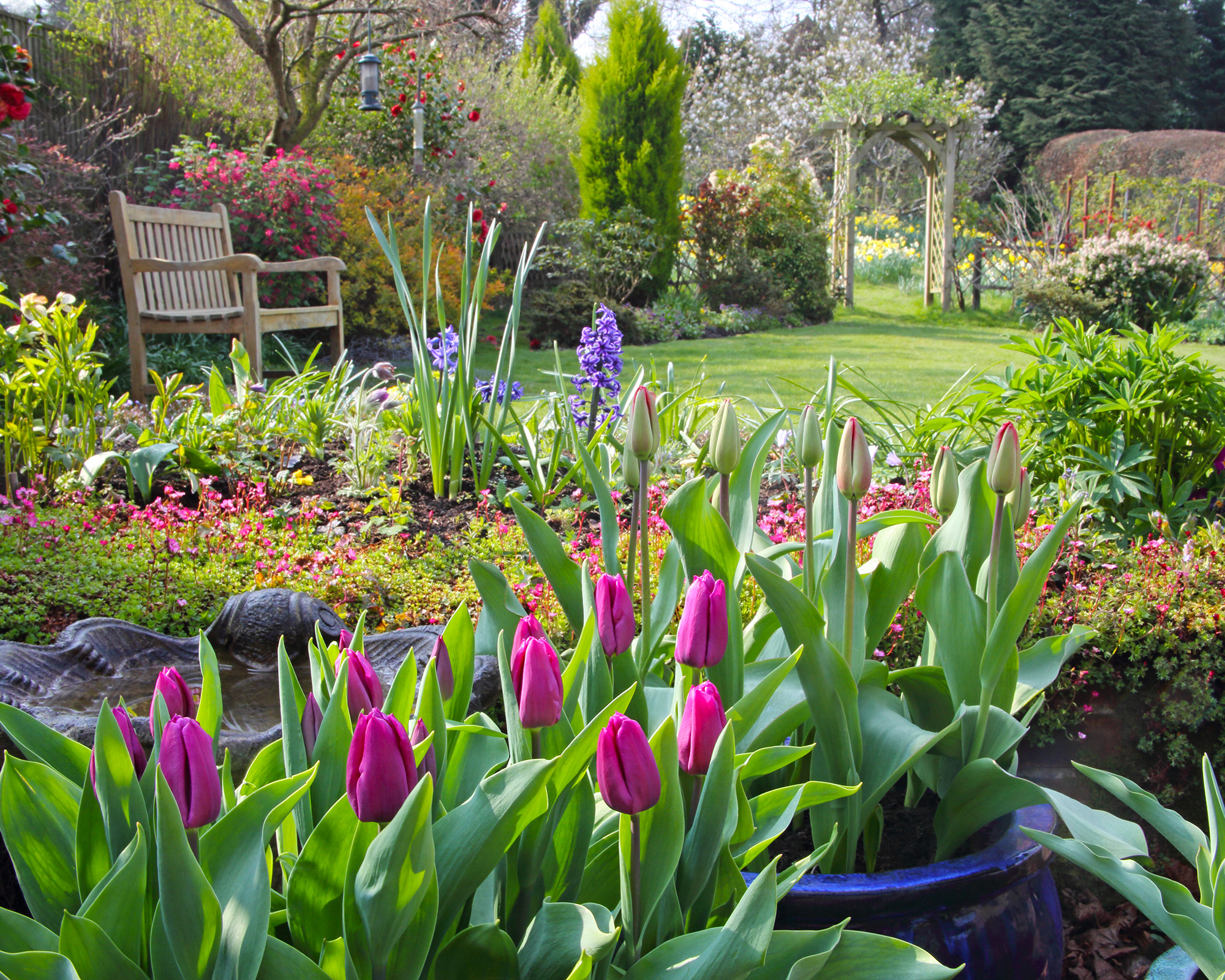
9. Don't forget the importance of bulbs
No garden is complete without planting bulbs for spring, summer and autumn. They’re the easiest plants to look after, requiring little attention after their initial planting, and they bring color to our gardens at a time when not much else is going on.
I often recommend leaving as many grasses and perennials standing in the garden until late winter or early spring, when it’s good to give them all a big chop and cut them down to the ground, preparing them for the new growing season. At this point a garden can look bare - but that’s when our galanthus, crocus, narcissus, tulips and alliums come into their own. They’ll be starting to poke their heads through those gaps while the other plants are coming back.
What’s more, there are so many colors to choose from here that you can go to town! Whether you want a blanket of creams and peaches from your narcissus, or crowds of deep red and dark purple types of tulips, the best way to work with bulbs is to plant them in groups.
A combination of at least three different types of bulbs is a good place to start; place them in groups of 15-25 in different spots throughout your garden borders and sit back and wait for them to pop out. Choosing bulbs that repeat or naturalise (tulips don’t but most other bulbs do) will mean you can plant one year and then let the bulbs do their thing for years after.
Another way to get good color in tricky places is to plant bulbs in small, lightweight containers and then put them in spots of the garden that you want to cheer up or improve in the spring while waiting for something else to grow in that space.
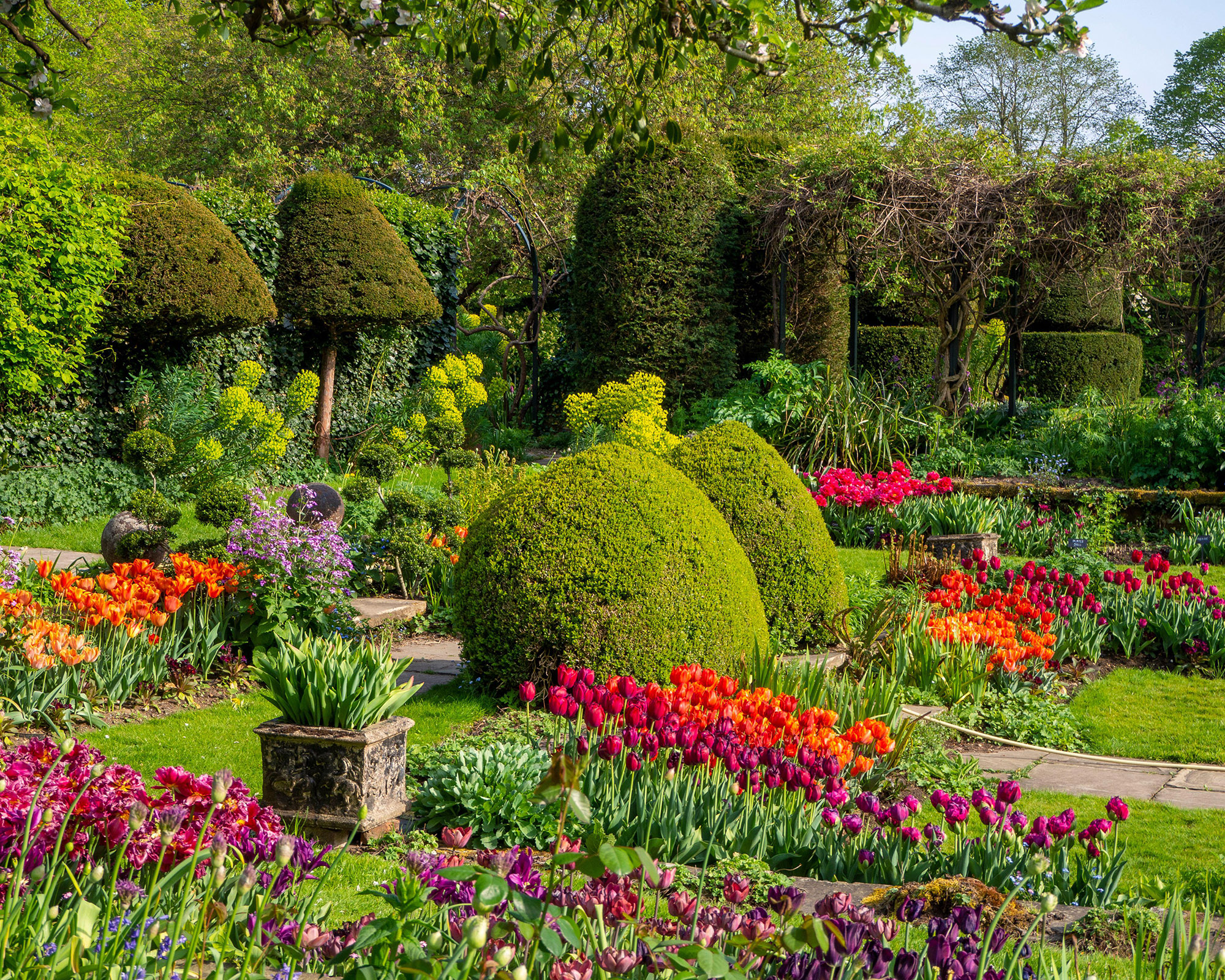
10. Pick your trees
There are a number of boxes that trees have to tick before being allowed into any of my gardens, and that list is very specific – particularly when it comes to small gardens. In an urban garden especially a little tree is wonderful, but it must sing for its supper.
When it comes to aesthetics there is a long list of dos and don'ts for choosing a tree for your garden. Color and height, yes. But also leaf shape, bark texture and color, blossom, fruit, whether the tree is multi-stemmed, oval shaped or espaliered. A good trick could be, if you have the room for it, to include two or three small specimen trees that do different things at different times of year.
For instance, holly for its winter berries, cherry for its spring blossom or acers for their fall color. When you start thinking about your garden as a whole, rather than a collection of individual plants, that really is when the magic starts to happen.
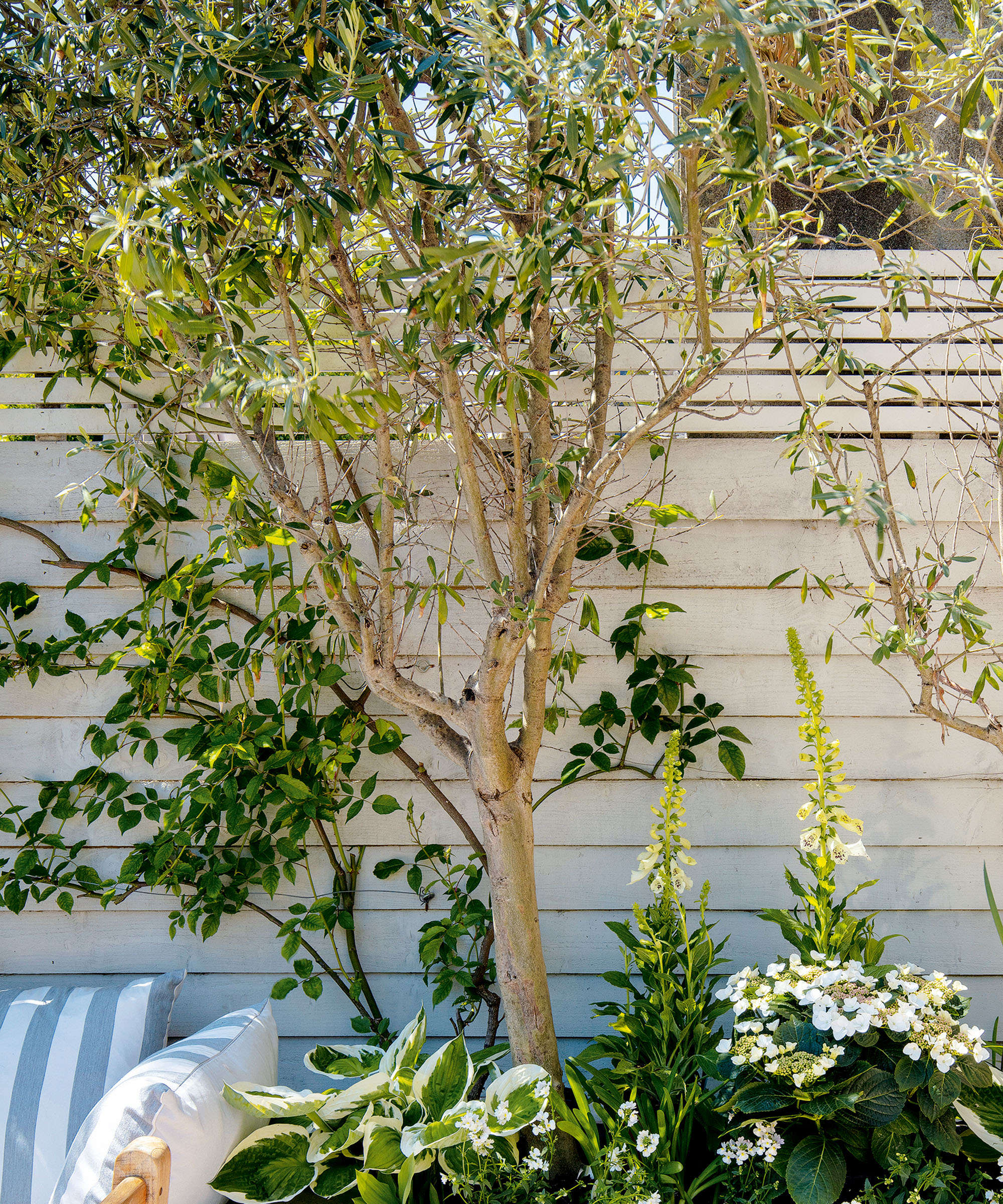
11. Think about winter interest
Swaying ornamental grasses are one of my favorite plants to use in a scheme, and they require very little maintenance. Balance the softness of these with more architectural shaped plants like alliums or phlomis for a contrasted look that works almost all year round.
We are all much more aware of our responsibilities to wildlife and providing a home for nature now, and one of the brilliant things about this is that there are so many creative ways to make your garden suitable for our furry and winged friends, and invertebrates and pollinators, that also look beautiful too.
For example, if you were to leave allium seedheads on after they’ve gone over, they look stunning in a frost or in the late low sun of a winter’s afternoon, sparkling in the winter landscaping. Equally phlomis, erygiums, sanguisorbas, sedums, teasels and many more plants can be left in borders after they’ve ‘gone over’ to be enjoyed all through the winter.
Some will retain some color, others will fade but still give you shadows and shapes within your border that would otherwise be missing during the colder darker months. Just make sure you cut them back in early spring to allow space for new growth.
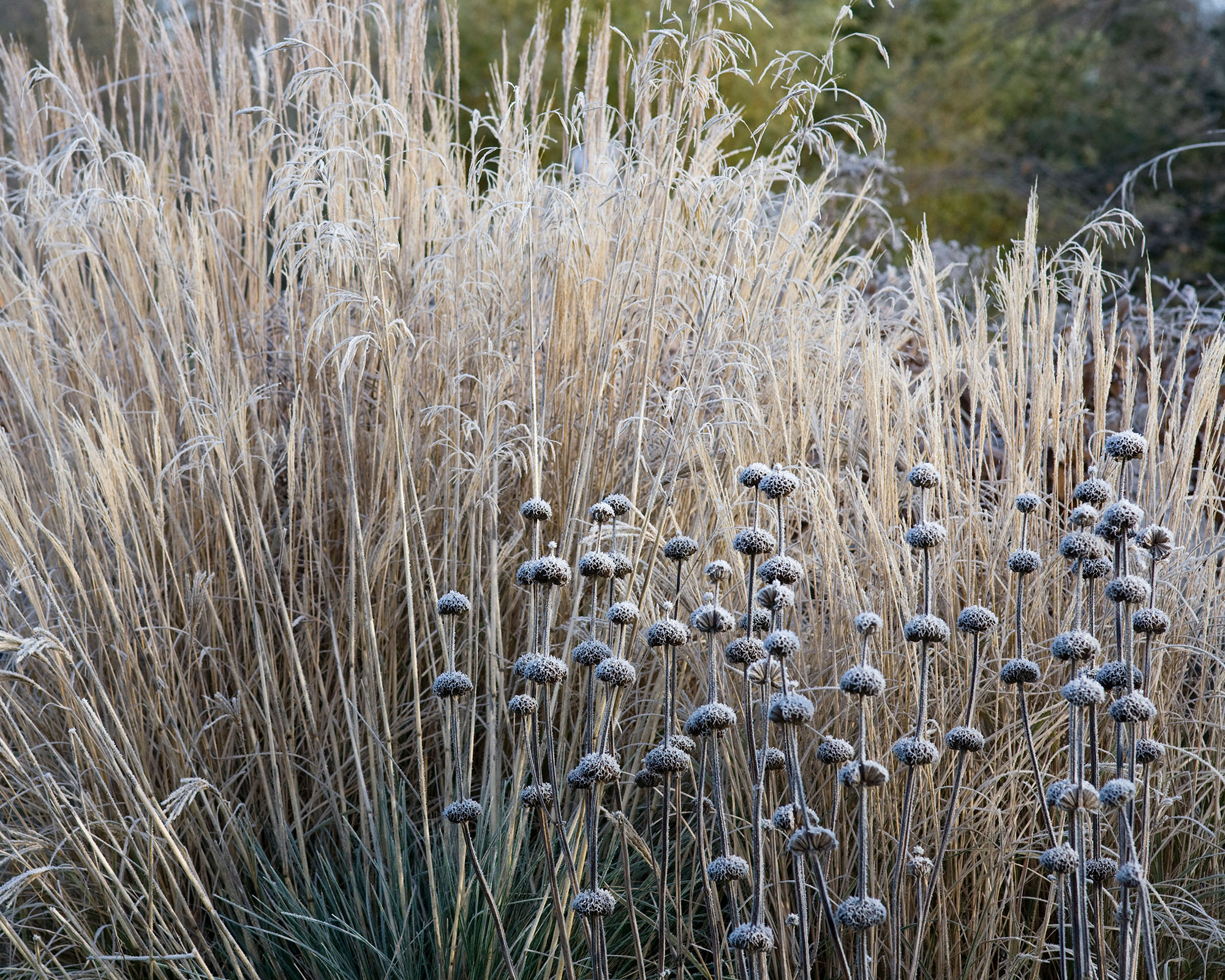
What plants are colorful all year round?
Choose plants for their interesting foliage if you're looking at bringing in color all year round. The best evergreen trees like conifers will add shape and structure. Whilst evergreen perennials will give flowers for long periods which will keep coming back year after year. And when they're not flowering many will give interesting foliage.

Tabi is the founder of TJG Gardens, a London-based design practice who work across the UK and abroad. With a reputation for textured, vibrant and informal planting schemes and rich, characterful gardens, Tabi enjoys sharing her love for the natural world with her clients. Her favourite projects are those that benefit humans and wildlife alike; in the studio, improving biodiversity and a client’s enjoyment of their outdoor space go hand in hand.
As well as designing big and small gardens in the city and the countryside, Tabi writes about nature, design and gardening for the Financial Times, Country Life, The Telegraph, House and Garden and Ideal Home.
